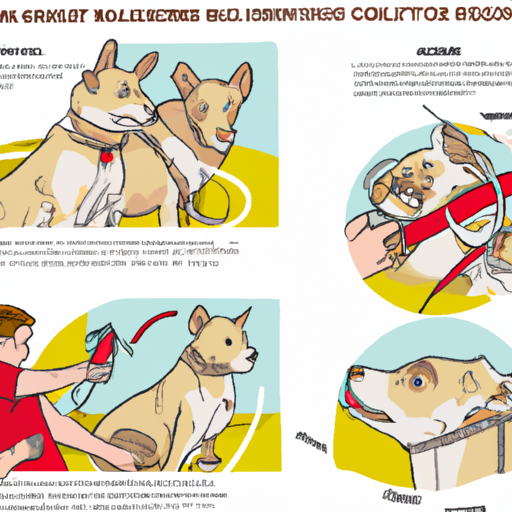As a caregiver to your furry friend, understanding how to properly use a shock collar can be the key to successful training and a stronger bond between you and your pooch. This guide will walk you through the process step-by-step, with the aim of ensuring safety and effectiveness in your training methods.
Understanding the Purpose of a Shock Collar
Shock collars, also known as electronic collars or e-collars, are tools used in dog training. They work by delivering a small electric shock to your dog’s neck when they exhibit unwanted behavior. Despite the name, these collars are not meant to punish your dog, but to deter negative behavior and reinforce positive ones.
- Positive Reinforcement: Reward your dog when they obey a command without the need for the shock collar. Treats, praises, and toys are great options.
- Negative Reinforcement: Use the collar to discourage unwanted behaviors. The aim is not to hurt your dog, but to surprise them and create a link between the bad behavior and the unpleasant sensation.
Selecting the Right Collar
The shock collar you choose needs to be appropriate for your dog’s size, breed, and temperament.
| Dog Size | Collar Size |
|---|---|
| Small | 10-12 inches |
| Medium | 14-20 inches |
| Large | 18-26 inches |
Ensure your selected collar has adjustable intensity levels. You should always start with the lowest level and only increase if necessary.
Proper Fitting and Placement
Ensure the collar is not too tight or too loose. You should be able to fit two fingers between the collar and your dog’s neck. The contact points should touch your dog’s skin, but not so tightly that it causes discomfort.
- Position the collar high on your dog’s neck, just below their ears.
- The collar should be tight enough to stay in place, but loose enough to rotate one or two fingers underneath.
- Check the collar’s fit regularly as activity can cause it to loosen.
Training Your Dog with the Collar
Patience is key when training your dog with a shock collar. The goal is to let your dog associate the shock with the unwanted behavior, and not with you or the collar.
- Begin with basic commands your dog is familiar with.
- Use the shock timely, exactly when the unwanted behavior happens.
- Never use the collar when you’re angry. Training should be a calm and controlled process.
Aftercare and Safety Measures
Keep in mind that a shock collar is a training tool, not a punishment device.
- Never leave the collar on your dog for extended periods.
- Regularly check for signs of irritation around the neck area.
- Always remove the collar while your dog is indoors or in a safe, enclosed area.
FAQs
Q: Can a shock collar hurt my dog?
A: When used properly, a shock collar should not hurt your dog. It’s designed to get your dog’s attention, not to punish.
Q: Can I use a shock collar on a puppy?
A: It’s not recommended to use a shock collar on puppies under 6 months old.
Q: How long can my dog wear the shock collar?
A: It’s recommended not to leave the collar on for more than 12 hours per day.
Q: Can I use the shock collar in the rain?
A: Many shock collars are water-resistant, but it’s best to check the manufacturer’s instructions.
Remember, the ultimate goal is a loving and communicative relationship with your dog. Training tools like shock collars are just that – tools to help guide your dog towards better behavior.



